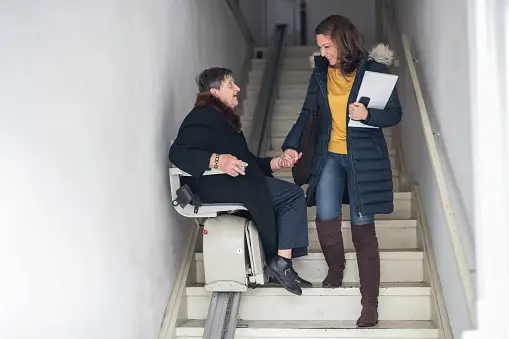For many people who struggle with their mobility, stairlifts are an essential part of their homes that allow them to remain more independent in their everyday lives.
However, whilst their modern incarnation was invented in the 1920s, it took until 1975 before they began to be installed in British homes.
The reason for this involves a historic lift company, an oil crisis and a trip to Holland.
Joseph Stannah’s eponymous company was founded in 1867, but it would take over a century for the seeds of Stannah’s most famous product to be sown.
Before the 1970s, they were almost exclusively known for creating cranes, hoists and lifts, primarily selling platform lifts through the first half of the 20th century, even rebuilding the business after it was literally destroyed by bombing strikes during the Second World War.
However, the oil crisis and a recession meant that Stannah were forced to diversify away from corporate customers and this led to a chain of events that led to the widespread adoption of the stairlift.
Initially, Alan and Brian Stannah wanted a system that would let people who had issues with their mobility access different floors of their own home, but unfortunately found that their initial plan of installing microlifts into adapted homes was not all that suitable.
Looking for an alternative, Brian Stannah travelled to visit a Dutch company known as Jan Harmer, who had a stairlift product designed for the European market.
Stannah would later purchase this design, and Brian and Alan would develop the prototypes for what became the first Stannah stairlift, a name that for decades became an almost genericised term for the entire industry.
Whilst production was initially slow, eventually the market took off and since then the concept has only evolved and advanced, making lifts that are more reliable, faster to install and easier to use.


